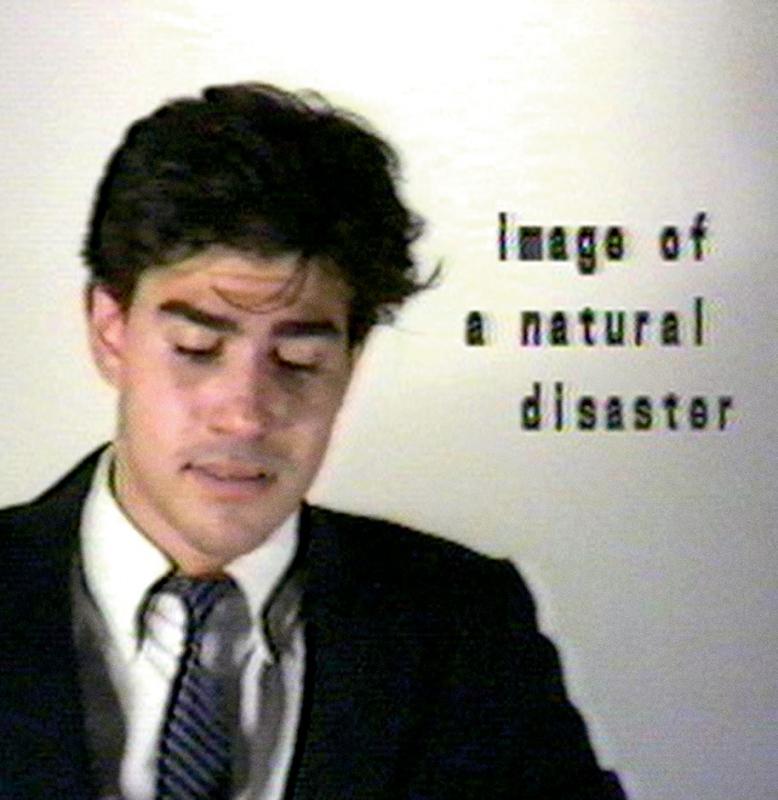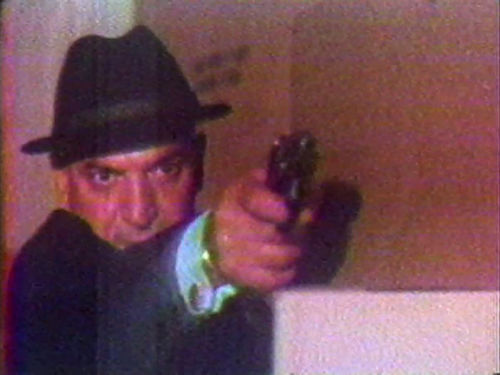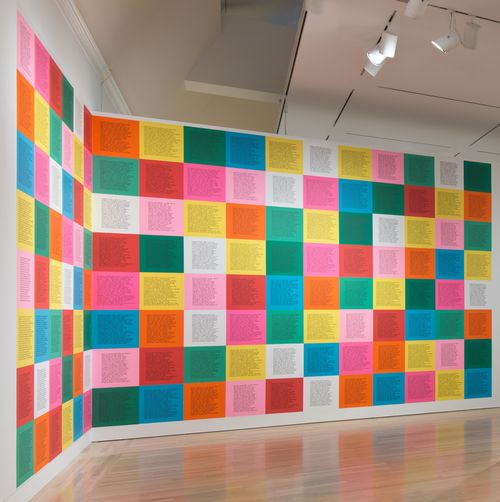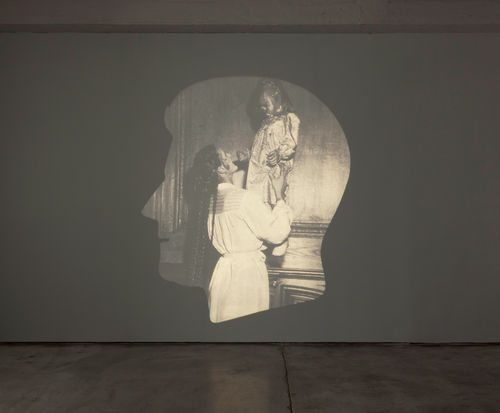Cultural Interference

Radical change is a matter of altering the entire culture's view of reality.
—Gregg Bordowitz#
For quite some time, it seems, artistic dialogues regarding criticality—by now a go-to, if also often doubted, rhetorical marker for unflinching engagements with and examinations of culture—have revolved largely around its precariousness or, more aptly, its likely demise. Indeed, two of the most prominent strains of critical practice in postwar art, appropriation and institutional critique, are by many accounts exhausted today. The former is typically posited as an operation, a kind of technique for displacement, first understood to radically lift the veil of images and idioms—extracting sign from syntax to dispel cultural myths—and allow viewers to recognize their own place in a constructed representational field. Yet with this operation considered today most often in a formal vein, images so "liberated" from their original settings are commonly regarded as utilized in the service of cultural amnesia, in the name of the perpetually circulating sign. As for institutional critique, which is by contrast largely considered a kind of articulation—an instance in which site and work meet, with the latter making evident the ideologies and infrastructures of the former—even its protagonists and champions have lately posited the genre as a thing of the past. To cite just two prominent examples, the artist Andrea Fraser would in a 2005 essay underline the degree to which institutional critique and its techniques necessarily had to be understood as "institutionalized" themselves—belonging to a celebrated passage in art history regarded by many as bolstering figures of authority more than dismantling or problematizing them in any substantive way.# And before the decade was out, in 2009, one of the editors of an anthology of writings on institutional critique explicitly deemed his subject a historical one, titling his introductory essay "What Was Institutional Critique?"#
Regarding such assessments, however, it is useful to consider how criticality is in fact consistently under duress. The term is a moving target, historically attended by questions regarding what it is, whether it can be sustained, and, moreover, whether it inadvertently fuels the very entities it aims to combat. Even a cursory survey of discussions regarding institutional critique, for example, reveals anxieties around the artistic model from its beginnings. No less a figure than the artist Hans Haacke—whose long-standing commitment to rendering transparent economic, social, and aesthetic structures throughout culture has led him to be immanently associated with the paradigm—used the phrase "consciousness industry" as early as the mid-1980s to describe the sophisticated networks of institutional support necessary to make visible ostensibly adversarial avant-garde artistic gestures.# Works seeking to emphasize the moral, political, and intellectual forces that determine and enforce culture, he observed, were nevertheless dependent on a museum or gallery platform designed to privilege aesthetic experience. Such an observation was elaborated on nearly ten years later by the art historian James Meyer in his nuanced 1993 exhibition What Happened to the Institutional Critique?. Presented at American Fine Arts in New York, Meyer's effort was intended specifically as a reply to that year's Whitney Biennial, which had, he argued, effectively thematized politics and subsequently rendered critical artwork the stuff of style, preparing it for ready consumption by the public.# Notably, the Berlin-based critic Isabelle Graw would roughly contemporaneously take note of museums' increasing desire to invite artists to deconstruct institutional infrastructures and ideologies in their projects, dubbing the growing trend "subversion for hire."#
This seeming paradox regarding modes of criticality, far from illustrating the details of distant history, is incredibly resonant with, if not just prescient of, circumstances in art today. If Haacke decades ago was suggesting that museums were increasingly corporatized entities—at the same time that they were, ironically, pressed to narrate their distinctiveness from the rest of culture in order to maintain relevance—so today these institutions have to vie for attention with an exponentially larger entertainment industry while still needing to demarcate the function of "art" as separate from other modes of production, distribution, and consumption.# And what arises in turn is a double-bind scenario taking the one described by Meyer to a new level: museums are compelled to highlight extreme measures by artists in order to compete with the intensity of popular culture, and yet, bracketed safely as "art," these gestures are easily digested and dismissed by the very public they set out to titillate. Again, the notion of critically engaging one's audience in art and its museum or gallery setting seems fragile at best.
Such echoes, while perhaps unanticipated in the sphere of common wisdom, make it tempting to return to the literature around institutional critique and appropriation to see what might be newly gleaned today—particularly when it comes to critics who, despite concerns about art's infiltration by mass culture, have lauded artists who position themselves in an expanded field with respect to art for the sake of efficacy. In a publication accompanying What Happened to the Institutional Critique?, Meyer, for his part, would ask whether "studio work, produced for display in the gallery, sufficiently questions its situation," subsequently suggesting that a "work" should be "a meeting of the demands of the site and the methods of the producer," allowing projects to unfold well outside gallery walls.# And in a famous 1982 text (which Fraser cites as one possible inspiration for her own use of the term institutional critique), the art historian Benjamin H. D. Buchloh would—after first praising Dan Graham's Homes for America (1966) as a critical engagement with an institutional framework outside the gallery setting—suggest that a group of younger women artists were taking up a similarly expanded field with new gravity.# Describing what he called a "paradigmatic shift" articulated in the work of Dara Birnbaum, Jenny Holzer, Barbara Kruger, Louise Lawler, Sherrie Levine, and Martha Rosler, Buchloh writes: "Anyone taking the implications of the situational esthetics developed in the late '60s and '70s into account as an irreversible change in the cognitive conditions of art production would have to realize that any return to an unconditioned autonomy of art production would be mere pretense, lacking historical logic and consequence, just as any attempt to reinstitute the conventions of representation after Cubism is absurd."#
Excerpted from Take It or Leave It: Institution, Image, Ideology. Copyright © 2014 by the Armand Hammer Museum of Art and Cultural Center, Inc. Published by DelMonico Books, an imprint of Prestel. The full essay can be found in the exhibition catalogue, available here.
Gregg Bordowitz, "My Postmodernism," Artforum 41 (March 2003): 228.
Andrea Fraser, "From the Critique of Institutions to an Institution of Critique," Artforum 44 (September 2005): 278–83, 332.
See Blake Stimson, "What Was Institutional Critique?," in Institutional Critique: An Anthology of Artists' Writings, ed. Alexander Alberro and Blake Stimson (Cambridge, MA: MIT Press, 2009), 20–42.
The phrase was first coined by Hans Magnus Enzensberger in The Consciousness Industry: On Literature, Politics, and the Media, ed. Michael Roloff (New York: Seabury, 1974). Enzensberger's argument was that education and the mass media were exploitative hegemonic tools, designed to reproduce and magnify extant social structures. Taken up by Haacke in his 1983 essay "Museums: Managers of Consciousness," it was expanded to address more specifically the museum's unacknowledged place of authority within culture, and its tendency toward "appeasement" rather than self-reflexive engagement. Hans Haacke, "Museums: Managers of Consciousness," trans. H. Haacke and S. Lindberg, in For Real: Works, 1959–2006, ed. Matthias Flügge and Robert Fleck (Düsseldorf: Richter, 2006), 273–81.
What Happened to the Institutional Critique? was on view from September 11 to October 2, 1993, and included work by the artists Gregg Bordowitz, Tom Burr, Mark Dion and the Chicago Urban Ecology Action Group, Andrea Fraser, Renée Green, Zoe Leonard, and Christian Philipp Müller.
See Isabelle Graw, "Field Work," Flash Art 23 (November–December 1990): 137, cited in Miwon Kwon, "One Place after Another: Notes on Site Specificity," October, no. 80 (Spring 1997): 102.
The role of the museum in contemporary culture is quite complex, but for the present context, what is relevant is the double bind it finds itself in. For a recent journalistic account of the pressure for museums to compete with other areas of culture, see Judith H. Dobrzynski, "High Culture Goes Hands-on," New York Times, August 10, 2013. For a variety of more specialized perspectives not only on the role of the museum but also on contemporary art, see "A Questionnaire on 'The Contemporary': 32 Responses," October, no. 130 (Fall 2009): 3–124. See also the Summer 2010 special issue of Artforum, "The Museum Revisited," which sought to consider the institution within a setting of the recent expansion of creative industries.
See Meyer, What Happened to the Institutional Critique? (New York: American Fine Arts and Paula Cooper Gallery, 1993), 8, 14.
Fraser writes: "I recently discovered that none of the half dozen people often considered the 'founders' of 'institutional critique' claim to use the term. I first used it in print in a 1985 essay on Louise Lawler, 'In and Out of Place,' when I ran off the now familiar list of Michael Asher, Marcel Broodthaers, Daniel Buren, and Hans Haacke, adding that, 'while very different, all these artists engage(d) in institutional critique.' I probably first encountered that list of names coupled with the term 'institution' in Benjamin H. D. Buchloh's 1982 essay 'Allegorical Procedures,' where he describes 'Buren's and Asher's analysis of the historical place and function of aesthetic constructs within institutions, or Haacke's and Broodthaers' operations revealing the material conditions of those institutions as ideological.' The essay continues with references to 'institutionalized language,' 'institutional frameworks,' 'institutional exhibition topics,' and describes one of the 'essential features of Modernism' as the 'impulse to criticize itself from within, to question its institutionalization.' But the term 'institutional critique' never appears." Fraser, "From the Critique of Institutions," 279.
Benjamin H. D. Buchloh, "Allegorical Procedures: Appropriation and Montage in Contemporary Art," Artforum 21 (September 1982): 48.








